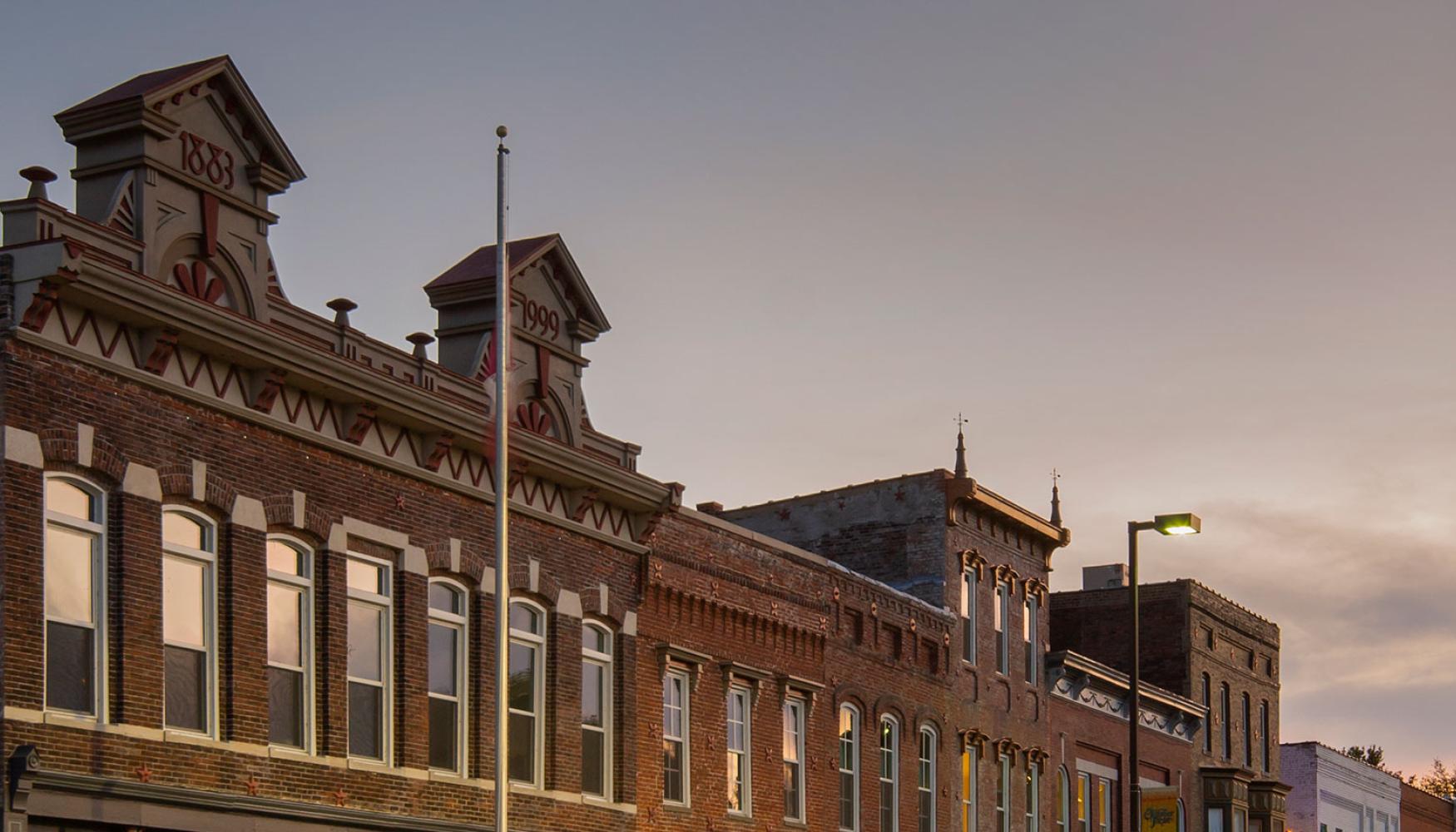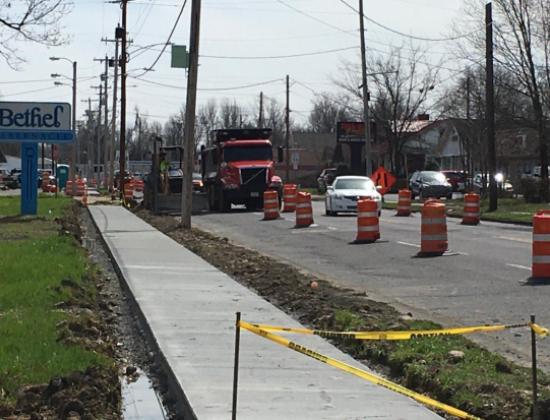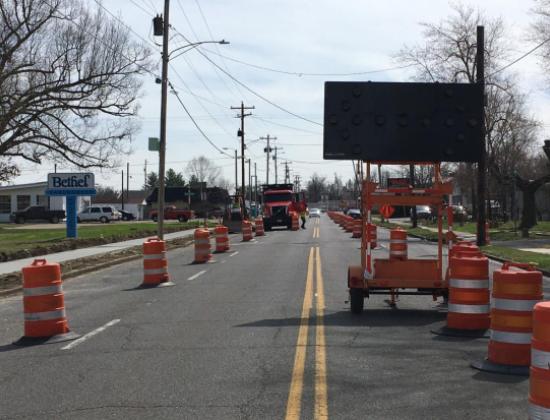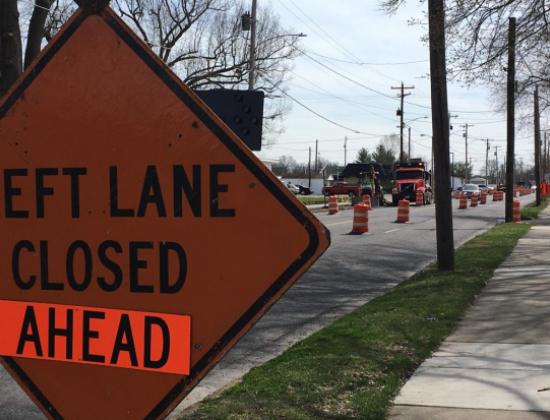Right-of-Way Inspections
The Engineering Department permits, oversees, and inspects all work within the City's right-of-way. It's important to contact the Engineering Department before initiating work within the right-of-way, placing equipment on a city sidewalk, or blocking a sidewalk, street, or alley. This ensures that your work complies with the City's regulations and standards.
If you have questions or need guidance, contact the Engineering Department at 270-444-8511, option 2.
Report a Street Maintenance Issue Through MyPaducah
Through an app and online portal, we are enhancing the public’s experience by providing more ways to request a service, report issues, or ask a question. To report a street or alley maintenance issue or an obstruction on a City street through MyPaducah, click the button link. Reports can be made through the app, too! Learn more about MyPaducah.
MyPaducah - Report a Street or Alley Issue
Street Rehabilitation and Repair
The Engineering Department is responsible for rehabilitating and restoring approximately 223 miles of city roadways, as well as sidewalks, curbs and gutters, drainage, and independent storm sewer facilities. The department coordinates and oversees the annual street rehabilitation and repair work with funds provided by Paducah's Annual Budget and the State Municipal Aid Program (MAP), a crucial financial support system for our City's infrastructure.
- Budget
-
The City has allocated approximately $2,000,000 from the Investment Fund for street rehabilitation and repair in Fiscal Year 2025. Paducah receives an allocation of funds from the Municipal Aid Program (MAP). MAP funds are collected from the State gas tax and are allocated for maintenance, reconstruction, or construction of City streets. Paducah’s allocation of State gas tax funds ranges around $400,000 to $600,000 a year.
For additional information about Paducah’s Annual Budget, see Paducah Open Finance.
- Pavement Management Software - PAVER
-
Contract for Pavement Inspections
The City approved a multi-year contract in November 2021 with Bacon Farmer Workman Engineering & Testing (BFW) to perform pavement inspections on City streets using the PAVER software program This five year contract updates the detailed pavement inspections completed in 2018 which inspected all 223 miles of Paducah’s streets. This contract provides an inspection of 20 percent of the streets each year and the development of street rehabilitation plans. The City is working with BFW to develop a plan to increase the street ratings so that the rehabilitation efforts will begin to outpace the rate of deterioration.
About the PAVER Software
The PAVER Software determines a Pavement Condition Index (PCI) through data gathered on each representative segment by BFW. By collecting data on factors such as pavement roughness, cracking types, edge of pavement cracking, potholes, swelling, and depressions, each street is assigned a PCI value between 0 and 100, with 100 representing the best possible condition of a street. Moving from pavement maintenance to this pavement management system allows the City to objectively identify streets that need repair strictly from a pavement condition and engineering perspective.
The PAVER software is a robust system that not only pinpoints streets in serious need of repair but also identifies unseen problems that lead to the demise of a street. Engineering research has shown that repairing small-scale pavement problems and correcting the pavement's source mainly by restoring positive drainage along the edge of a street's curb and gutter can save significant money over time. Our goal is to address pavement problems while they are small-scale and before they lead to more significant, more expensive issues. This PAVER software helps us accomplish our goals by troubleshooting problem areas and offering solutions. Solution options could include a steeper crown to improve runoff or a change in the roadway's design and elevation.
Several cities across Kentucky and large organizations, including the United States Air Force, United States Army Corps of Engineers, and Federal Highway Administration, use the PAVER software and PCI rating system published by Colorado State University.
- Street Rehabilitation Factors
-
The entire right-of-way infrastructure is evaluated when reviewing a street to determine if it should be selected for rehabilitation. The evaluation considers the pavement conditions, curbs and gutters, and sidewalks. The streets chosen yearly for rehabilitation are not solely based on a low PCI value. Other factors taken into consideration include
- Traffic Impact – A street with a high traffic flow is considered a higher priority.
- Utility Work - If utility work is scheduled for a particular road, the street rehabilitation will be postponed until the utility projects are completed.
- New Economic Development or Construction Projects - The timing of new building construction affects street rehabilitation. Streets will be repaired after the construction work is completed.
- Subdivision/Neighborhoods Rehabilitation Projects – When it becomes evident that several streets need to be rehabilitated within a subdivision or neighborhood, the project often becomes a large-scale project.
- Budget – The available funds and the estimated rehabilitation costs determine the work that can be done each year. As the cost of asphalt or concrete goes up, the amount of paving and concrete work that can be done using a set budget is reduced. For additional information about Paducah’s Annual Budget, see Paducah Open Finance.
- July 2024 - June 2026 Street Rehabilitation Plan Map
-
Click the following link to see a map with selected roadways for rehabilitation. Click a highlighted roadway to see the extent of the rehabilitation project and the projected fiscal year for completion.
Regional Transportation Planning
Visit Transportation Plan to learn more about the transportation planning process between the City and other agencies.
Frequently Asked Questions
Q: What is the maintenance responsibility of property owners related to adjoining right-of-way?
A: Maintenance responsibilities are outlined in Paducah Code of Ordinances 98-31
Q. What is the process for installing a new or replacing an existing driveway entrance pipe?
A. The process is outlined in Paducah Code of Ordinances 98-33.
Q. Which roads in Paducah are State routes?
A. Some of the State routes are Kentucky Avenue, Irvin Cobb Drive, Park Avenue, Martin Luther King Jr. Drive, Hinkleville Road, Old Mayfield Road, Lone Oak Road/Jackson Street, Cairo Road, Olivet Church Road, HC Mathis Drive, Joe Clifton Drive, 32nd Street, and sections of 8th and 13th Streets.
Additional Information
While the City of Paducah Engineering Department works on street rehabilitation, stormwater and drainage, and major repairs, the City of Paducah Public Works Department has crews that address items including traffic signal maintenance, potholes, and more. Visit Street Maintenance for more information.



